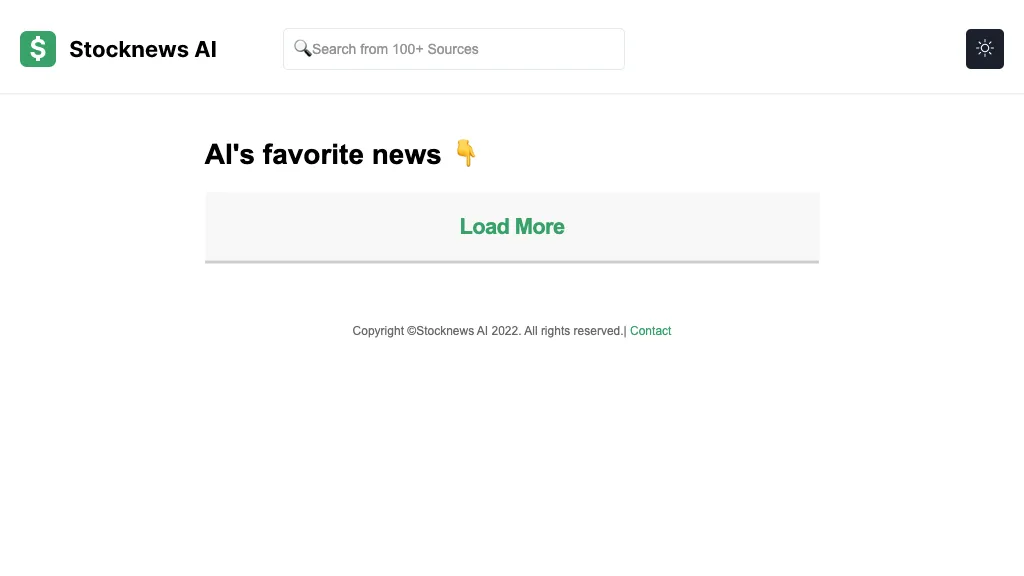20 Pro Info To Deciding On AI Stock Picker Analysis Sites
20 Pro Info To Deciding On AI Stock Picker Analysis Sites
Blog Article
Top 10 Tips For Assessing The Quality Of Data And The Source Of Ai Platform For Predicting And Analyzing Stocks
In order to ensure accuracy and reliability of information, it is crucial to assess the quality of data sources as well as AI-driven stock trading platforms. Insufficient quality data can cause inaccurate predictions as well as financial losses. It can also cause mistrust for the platform. Here are the top 10 suggestions to evaluate the quality of data and the sources it comes from.
1. Verify the data sources
Find out the source of the data: Make sure the platform uses reputable and well-known data providers (e.g., Bloomberg, Reuters, Morningstar, or exchanges such as NYSE, NASDAQ).
Transparency: The platform should be transparent about its data sources and update them regularly.
Avoid dependency on one source: Trustworthy platforms typically aggregate data across multiple sources to minimize the chance of errors and bias.
2. Check the Freshness of Data
Real-time or. delayed data: Find out whether the platform is providing actual-time data, or delayed data. Real-time data is crucial for active trading. However, data that is delayed can be adequate for long-term analytics.
Update frequency: Make sure to check the frequency with which data is changed.
Accuracy of historical data: Make sure that historical data is consistent and free of gaps or anomalies.
3. Evaluate Data Completeness
Look for missing or incorrect information.
Coverage: Ensure the platform has a wide selection of markets, stocks indexes, and other equities that are relevant to the strategies you use for trading.
Corporate actions: Check if your platform is able to take into account stock splits and dividends as well as mergers and other corporate events.
4. Accuracy of Test Data
Cross-verify data: Compare the data from the platform to other reliable sources to ensure that the data is consistent.
Error detection: Search for outliers, erroneous price points or financial metrics.
Backtesting - Use data from the past to back-test trading strategies to check if the results are in line with expectations.
5. Take a look at the data Granularity
Detail - Make sure you can obtain granular information such as intraday volumes, rates, bid/ask spreads as well as order books.
Financial metrics: Make sure the platform is able to provide detailed financial statements such as the income statement, balance sheet and cash flow. Also, make sure it includes key ratios like P/E (P/B), ROE (return on equity) etc. ).
6. Check Data Cleaning and Processing
Normalization of data is crucial to ensure consistency.
Outlier handling: Verify the way in which the platform handles outliers or irregularities within the data.
Data imputation is missing Make sure to check if your platform uses reliable methods for filling in the data that is missing.
7. Assess the Consistency of Data
Align all data with the same timezone. This will prevent any discrepancies.
Format consistency: Make sure your data is presented in a consistent manner.
Cross-market consistency: Verify data Harmonization across various markets or exchanges.
8. Relevance of Data
Relevance to your trading strategy Make sure the information you are using is compatible with your trading style (e.g. analytical techniques quantitative modeling or fundamental analysis).
Features selection: See whether the platform offers pertinent features (e.g., sentiment analysis, macroeconomic indicators, news data) that can help improve the accuracy of predictions.
9. Examine Data Security and Integrity
Data encryption: Check whether the platform uses encryption to protect data when it is transmitted and stored.
Tamper proofing: Make sure that the data on the platform isn't being altered.
Compliance: Check that the platform meets the rules for data protection (e.g. GDPR, CCPA).
10. Transparency Model for AI Platform Tested
Explainability: Make sure the platform provides insights into the way in which the AI model uses the data to generate predictions.
Bias detection - Check to see if your platform actively monitors data and models for biases.
Performance metrics: Assess the quality of the platform by evaluating its track record, performance metrics as well as recall metrics (e.g. precision or accuracy).
Bonus Tips:
Reputation and feedback from users Review reviews of users and feedback to assess the credibility of the platform.
Trial period. Try the trial for free to explore the features and data quality of your platform prior to deciding to decide to purchase.
Support for customers: Ensure that the platform offers a solid support for problems related to data.
These suggestions will allow you evaluate the accuracy of data as well as the sources used by AI stock prediction platforms. This will help you to make better informed decisions when trading. Check out the most popular ai stock trading app url for site info including ai trading, using ai to trade stocks, ai for stock predictions, best ai stock trading bot free, ai chart analysis, ai for stock trading, ai stock trading bot free, using ai to trade stocks, ai investing, ai stock trading app and more.
Top 10 Tips For Assessing The Latency And Speed Of Ai Trading Platforms
For algorithmic, high-frequency, and active traders speeds and latencies are crucial when looking at AI platforms to forecast stock prices and analyze. Even milliseconds can affect the execution of trades and even profitability. Here are the 10 best tips for measuring the speed of the platform.
1. Real-time Data Feeds to be used for evaluation
Speed of data delivery: Make sure the platform delivers real-time data with minimal delay (e.g. less than a millisecond delay).
Nearness of the data source: To reduce the amount of time required to transfer data, make sure whether your server's servers are able to be situated near major exchanges.
Data compression: Check whether your platform is using efficient data compression techniques to speed up the delivery of data.
2. Test Rate for Trade Execution Rate
Order processing: The platform's capability to complete and process trades quickly after an order is submitted.
Direct Market Access: Confirm that the platform provides DMA. DMA is a feature that lets you transfer orders directly to exchanges, without intermediaries.
Execution Reports: Check if your platform provides detailed reports on the execution of orders, including timestamps.
3. Examine the Platform's Responsiveness
User interface (UI also known as speed of user interface) It is a measure of how quickly the platform's user interface responds to the inputs you enter (e.g. clicking buttons or loading graphs).
Chart updates Verify whether charts and visualizations are updated in real-time update without delay.
Mobile app performance If you are you are using a mobile application be sure that it is running just as fast as a desktop version.
4. Check for Low-Latency infrastructure
Server Locations: Make sure that the platform has servers with low latency located near major hubs for financial exchanges or financial hubs.
Co-location: If the platform allows co-location, then you can host your trading algorithm on servers that are near the exchange.
High-speed networks: Determine if the platform uses fiber-optic networks that are high-speed or low-latency technology.
5. Evaluation of Backtesting and Simulation speed
Check how quickly the platform processes and analyzes old data.
Simultaneous trade simulation The platform should be capable of simulated real-time trading without any noticeable delays.
Parallel processing (or distributed computing) Learn if a platform uses parallel or distributed processing to accelerate the complexity of calculations.
6. Calculate the API Latency
API response: The API's API is evaluated by the amount of time it takes to respond to requests.
Rate limits: Verify that the API is within reasonable limits for rates to prevent delays when high-frequency trading is taking place.
WebSocket Support: Verify whether your platform is compatible with WebSocket protocols that stream data in real time and at a low latency.
7. Test platform stability under load
High-volume trading: To test the platform’s responsiveness and stability, simulate high-volume scenarios.
Test the platform in times of high volatility on the market to make sure it is able to withstand rapid fluctuations in price.
Test for stress: Check if your platform provides methods for stress testing strategies in extreme conditions.
8. Assess Connectivity and Network
Internet speed requirements: Ensure that your connection is at the recommended speed of your platform.
Verify connections that are not redundant.
VPN latency. If you're using VPN, VPN be sure to check whether it creates significant latency.
9. Make sure to check for speed enhancement features
Pre-trade Analytics: Be sure the platform provides pre-trade analysis to improve order routing, execution speed and many other aspects.
Smart Order Routing (SOR). Make sure that the platform is using SOR in order to find the fastest and most efficient execution sites.
Latency monitoring: Check whether the platform provides tools for monitoring and analyzing the latency in real-time.
10. Review User Feedback and Benchmarks
User feedback: Read reviews from users to assess the platform's performance in terms of the speed of its operation and latency.
Benchmarks provided by third parties: Look for independent benchmarks and reviews which evaluate the platform's performance against its rivals.
Case studies Ask the platform whether it has case studies or testimonials that highlight its capabilities with low latency.
Bonus Tips
Trial period: You are able to avail a demo for free or a trial to test out the performance and latency of the platform.
Support for customers: Make sure the platform provides assistance with issues related to latency, or optimization.
Hardware requirements. Verify whether the platform works with specific hardware, such as high-performance computers.
With these suggestions using these tips, you will be able to accurately assess the speed, latency, and precision of AI analysis and stock prediction systems. This allows you to choose a platform based on your trading requirements, while also minimizing any possible delays. The need for low latency is vital for high-frequency traders and algorithmic traders. Even small delays could have a major impact on profitability. View the top rated chart analysis ai for more examples including best ai stocks to buy now, best ai stocks, can ai predict stock market, ai copyright signals, stock trading ai, ai stock price prediction, chart ai trading, ai for trading stocks, ai software stocks, ai tools for trading and more.